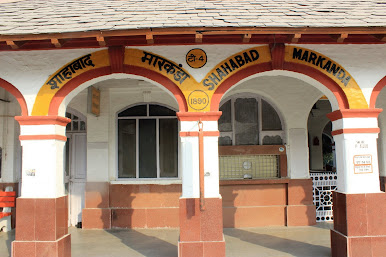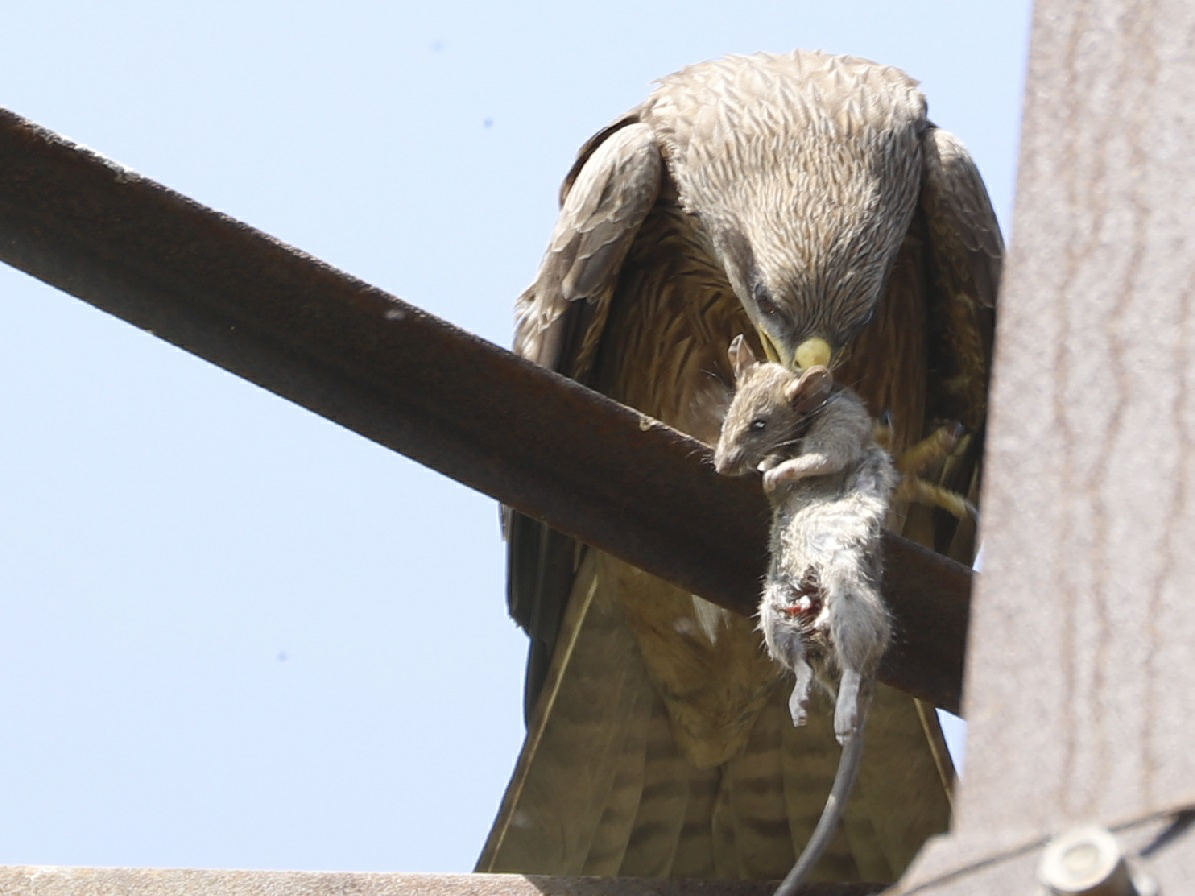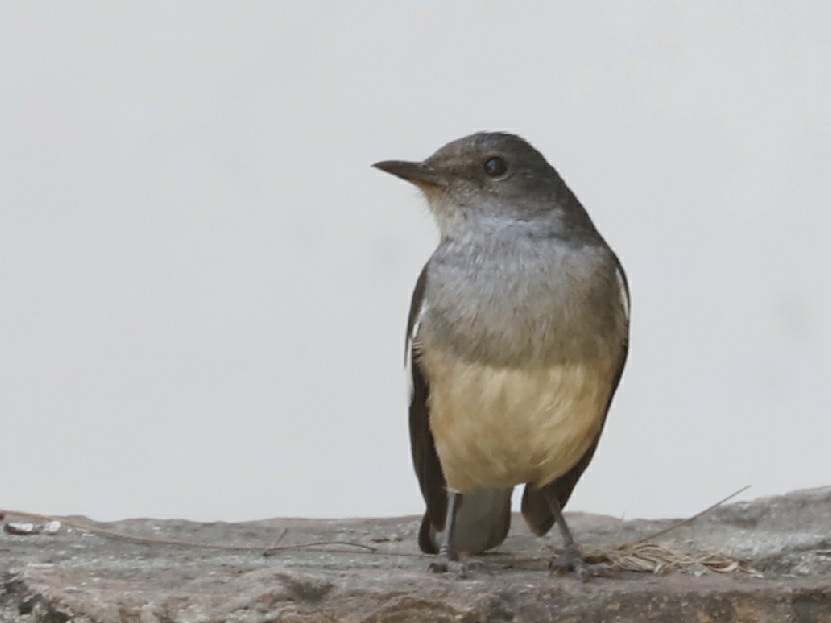Shahbad Markanda Railway Station.
Shahbad Markanda is a tehsil town under Kurukshetra district of Haryana. It falls on GT Road that has a long history. As per historical records GT Road was first built around 300BC by the founder of Maurya dynasty Chandragupta Maurya, that connected Kandahar now in Afghanistan to Chittagong now in Bangladesh but then a part of his kingdom. The idea was to have connectivity between the farthest corners of his kingdom for develop entire region for better trade and movement of people. Since then every subsequent ruler improved on this road that had important cities en route such as Patliputra, Prayag, Takshshila etc. A major thrust was given to this road in medieval time during Sher Shah Suri's reign due to which many modern historians credit him for building GT Road. From then on Mughals and then British further improved the road further so much so that British founded Thomson College of civil engineering in Roorkee that is today called IIT Roorkee, to have trained civil engineers for construction and maintenance of this road. In 1959, when Asian countries got together and floated the idea of an Asian Highway measuring 20000+ kilometer route connecting some 40 countries from Japan to Turkey, India's GT Road became part of Asia Highway (AH) 1. After independence of India the road from Amritsar to Howrah was called National Highway 2 or NH2 and now with change in its nomenclature it is broken into NH 19 from Kolkata to Agra and NH44 further north.
Ambala the cantonment town built by British during Raj era is 20 Kms north towards Amritsar and Kurukshetra that is 20 km south toward Delhi are the nearest bigger townships around Shahbad. It has got its second name Markanda due to the river Markanda that flows just outside the town, a little north of it. Kurukshetra has a very long history and finds traces in mythology as the place where the war between Kauravas and Pandawas was fought, as described in Mahabharata, the epic. Kurukshetra is a holy town with that history and has many a temples around depicting the same and is also a education/learning centre that has the famous Kurukshetra University.
Shahabad was a town build by Muhammad Ghauri in 1192 after he defeated Prithviraj Chauhan in the war of Tarain ( now Tarawdi/Taraori). Historian differ in the number of times Ghauri was defeated by Prithviraj Chauhan before Prithviraj was defeated and subsequently killed by Ghauri, some say 8 and some 16 and some others put that number to 20. For a long time Ibahim Lodhi and Babur also seem to have stayed and expanded the town that largely remained Muslim majority town for many centuries. I am still unclear, however, whether a fort in Shahbad was built during Lodhi dynasty or during Mughal era. There are also references of Banda Singh Bahadur, who was Guru Govind Singhji's disciple, defeating Aurangzeb's forces and capturing Shahbad fort in early eighteenth century. Shahbad Markanda got its Railway Station in 1890 and is one of the oldest since Indian Railways expanded and connected towns between Lahore and Delhi. Although bigger towns like Panipat, Karnal, Ambala, Ludhiana and Amritsar also got stations in the late nineteenth century.
I must have visited Shahbad for the first time after I got my first car, a secondhand 1968 FIAT1100, that was pre-owned by my father in law, in 1992. My father in law belonged to this town, so my wife, our 4 year old son and I were visiting the family. Twenty Nine years back Shahbad Markanda looked a very small town, a bit larger than Betma. GT Road then didn't have any flyovers or road dividers so like in current times there was no scope for you to overshoot the entry to town and take a turn after 2 or 3 kilometers ahead. After turning into the town you pass through a series of labyrinth and finally reach a haveli. The last connecting road was just about 5' wide so our car had to be kept near gurudwara that was/is some 300 steps away ( I measured it recently with my Fitbit, the wearable electronic band). This locality is called Majri Mohalla. The haveli must have been built some 300 year back by my father-in-law's ancestors who had some landholdings and were traditionally farmers. Although my grandfather-in-law was a civil engineer and highly learned person they didn't give up farming. You enter the haveli through a large open verandah surrounded by eight rooms on the ground floor and some 6 on the first. It was a very old construction and not in a very good shape so half the rooms that were not in use were permanently shut. My father-in-law and two of his brothers had left Shahbad long ago due to their higher education and subsequent occupation and only his elder brother's family lived in the haveli. This haveli was within the "walled city", although you don't see walls of the fort that once enveloped the town. Adjacent to the haveli was a small plot where cattle lived and next to that was family temple there lived the deity, Baba Bholenath... Shiv/Shankar. This was a beautiful temple built in a round small construction on an elevated platform. To visit the temple you have to take some 14-16 steps down, walk some 30 feet and climb the steps again. There was empty land around the temple and hardly any other construction so one could see some distance. It was peaceful and it filled you with piety.
This was our first visit after we got married, so you could imagine the reception that I would have got from everyone especially our Tai ji who was a lot older than my own mother. She was so full of love and emotions that it was difficult to say no to anything that was offered to eat. During our wedding I had barely seen her but when we had bowed to seek her blessings her eyes said everything and I looked forward to meeting her again but that opportunity came many years later. After spending a couple of hours there we got a very emotional send off and I think that was the last time I saw that haveli and our Tai ji.
Haryana was part of Punjab before reorganization of states after country got independence, so beside Hindus and Muslims there is a sizeable population of Sikhs that have been here ever since the town was founded. So you see a large number of not just temples but also masjids and gurudwaras. Every half a kilometer you will probably find four temples, two gurudwaras and a masjid. Since our visit in 1992 a huge tract of farmland is acquired by HUDA who built a modern township around the old walled city. The population must have grown 10 times since and lots of people who craved for modern living and could do nothing to improve the living conditions in the old town vacated their houses in old town and moved out to HUDA colonies. Our family was also one of them. So the haveli where we went was pulled down and now an empty unused plot stands there that is a family property of four of our Tauji's children. The other plot that housed cattle was fenced and came to my father-in-law in family partition and the temple and land around it was allocated to another Tauji.
Some 10 years back Tauji and his children, who had the temple, decided to renovate it and filled up the ground around and leveled entire plot same as that of the deity's, so devotees don't have to take to stairs, although it's a private family temple neighborhood people visit the temple regularly to pray and seek Bholenath's blessings. A couple of rooms were also built to house a pujari and his family.
On the cattle house, there were no cattle now and only stink had remained. Some five years back my wife and her siblings decided to build a small house to keep my father-in-law's memorabilia after his death six and a half years ago. This idea filled us all with emotions that it would keep his memory alive in us as we would have a house where we would find him. He was born there and now he would live there again in our memories that would come alive whenever we went there. The house was completed a couple of years back but is still being arranged. The house sits in the lap of the temple and it's very pious feeling that fills you with peace.
During Mughal era or even before this portion was apparently a tehkhana, a cellar, where prisoners were kept and around it a thick 2-3 feet wide wall was constructed. Everything else around the wall got destroyed, but a portion of wall remains in dilapidated condition that we are trying to preserve but unsure of its life.
A short distance from this house are our family farms which are in possession and are looked after by our nephews. It was lovely to visit the farms and memories of my visits to farms around Betma came alive. Not that I have not visited farms since then, my own inquisitiveness and some work related to livelihood projects that I do, have kept me grounded to these roots. Upon reaching the farm we found that there was a huge tree whose shade was providing cool breeze that we really enjoyed although it was not summer yet, I suppose even in peak summer one could find solace and enjoy the cool breeze keeping the hot sun away. The base of the tree was between 8 to 9 feet and it was nearly 40 feet high and the width in the middle about 50 feet. An enquiry revealed that this tree was around 400 year old and it's base houses species such as snakes and reptiles. The tree also has several beehives that is a constant source of honey.
A tractor that was lying there also made you feel "grounded". In a small shade nearby there was a black coloured tall pregnant cow ruminating and relaxing. She reminded me of Shyama and nostalgia built up further.
While we were enjoying the breeze and also smelling the cow dung that for a change was not stinking, I saw two black kites in the sky coming at each other at a mach speed.. I moved my lens up and before I could focus properly they were into each other as if to kill.. it was a "wonderful" and rare sight, not because of fights but because it was unique to capture that through the lens.
PS: All pictures clicked by me. Station pics 13. NOV.2016. Rest of the pictures Feb26-27, 2021. Equipment: Canon 600D, Canon 6D mk 2 and One+3T phone camera.



















Well written, Pradeep. The narrative was do compelling that I just kept reading it till the end. It was also very informative.
ReplyDeleteThank you so much Suchi for encouragement.
ReplyDeleteVery intetesting and informative. I was not aware of all this history
ReplyDelete